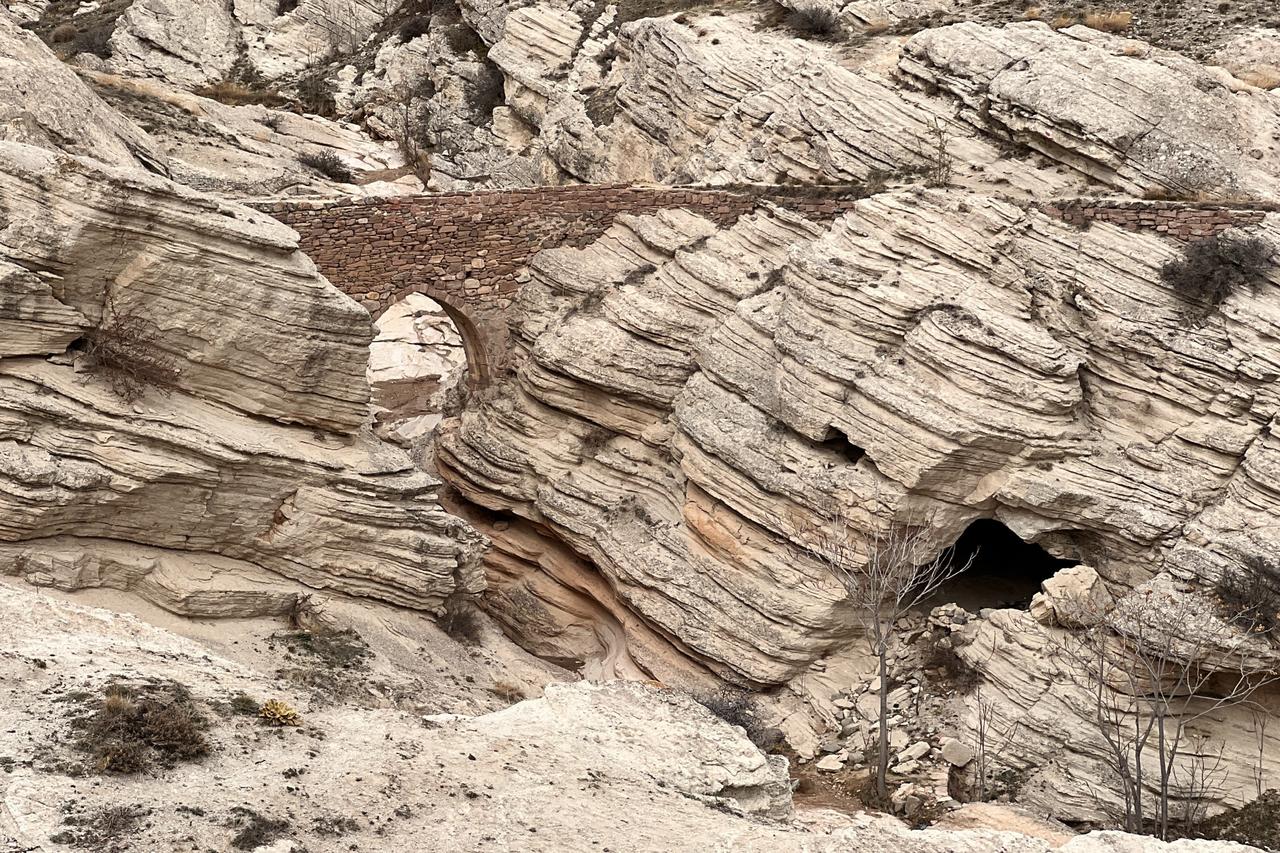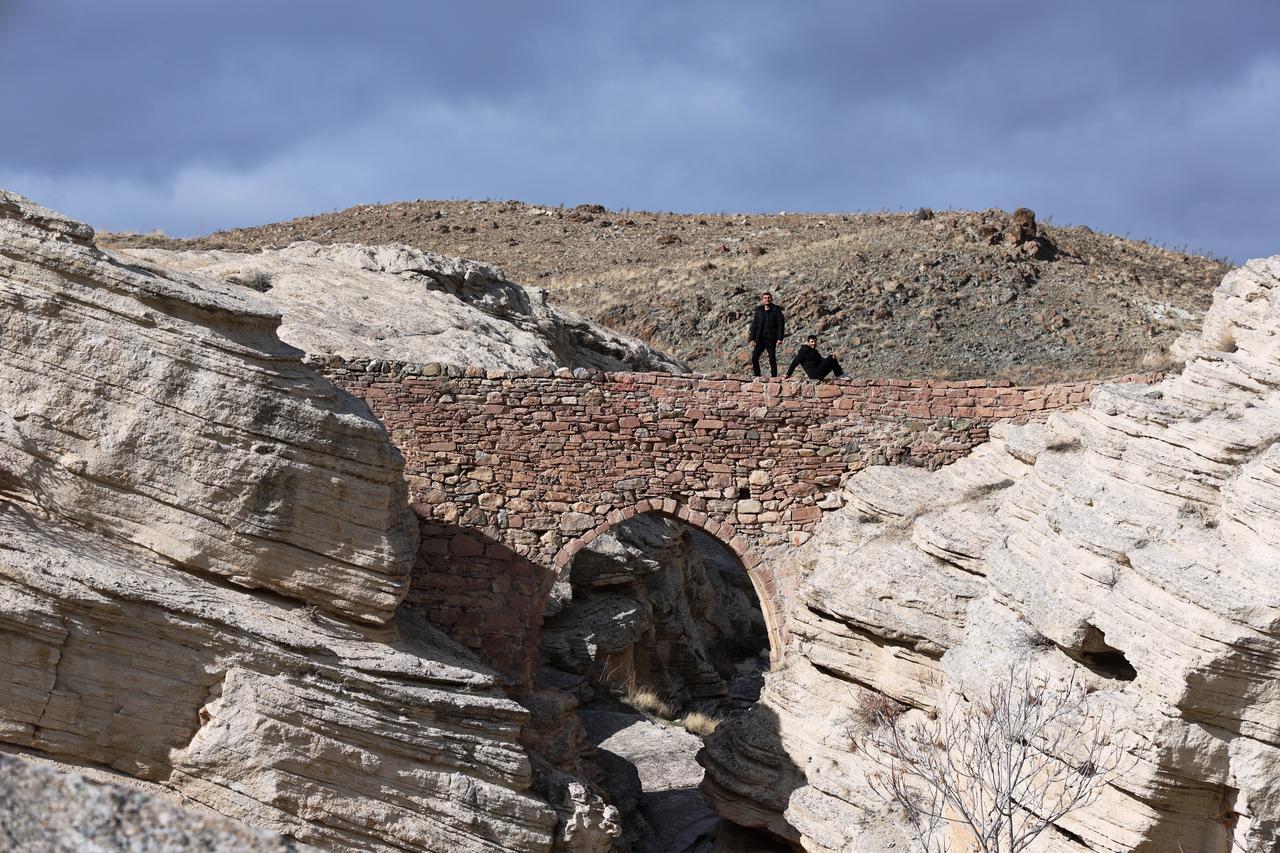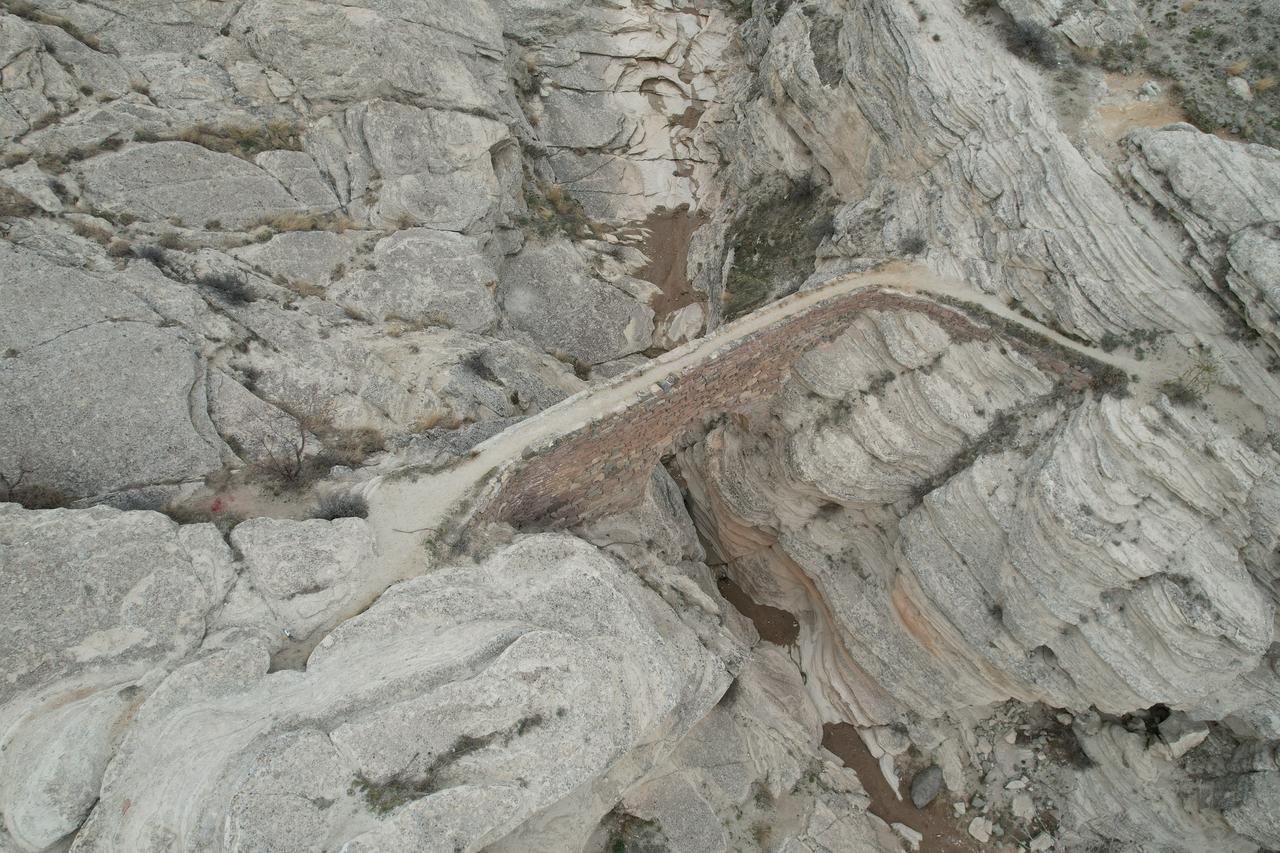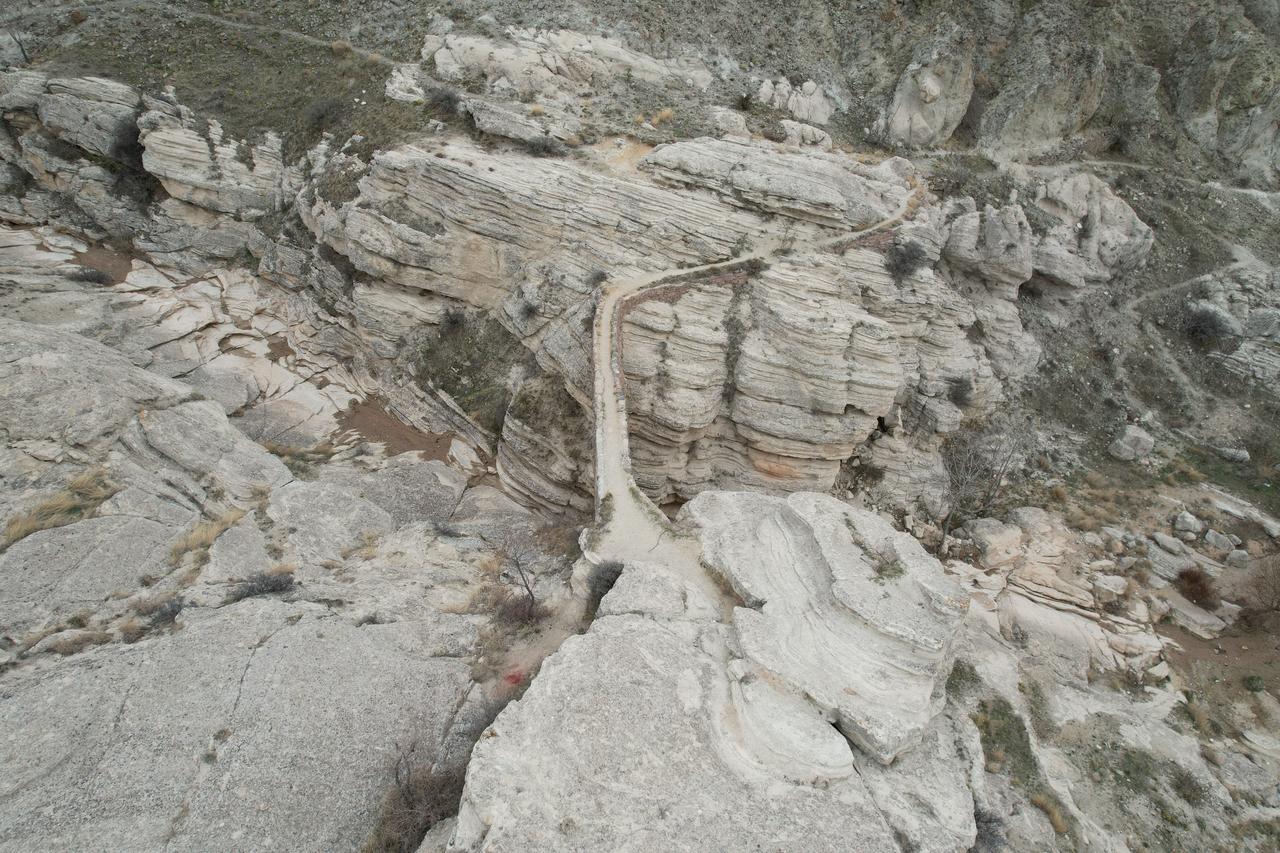
In the historic Sille neighborhood of Konya’s Selcuklu district in Türkiye, a stark stone structure known as Seytan Koprusu (Devil’s Bridge) continues to attract attention with its unsettling appearance.
The structure, which stands in a narrow valley and is both high and very narrow, was first built as a 'su kemeri'—an aqueduct, an elevated construction designed to carry water across a natural obstacle—and only later came to serve as a crossing between two steep slopes. Its height and narrowness have made it unusable today, yet its eerie silhouette continues to draw those curious about its story.
Sille itself lies on volcanic terrain whose rocks contain an exorbitant amount of salt minerals, and this has made usable freshwater sources extremely scarce in the area. According to Sercan Yayla, an archaeologist responsible for Sille Museum under Selcuklu Municipality, local rulers once decided to bring water from springs in Tatkoy, a nearby settlement, by laying kunk, clay water pipes, toward Sille.
As the water approached the settlement, a stream cut across the planned route, so builders put up the current stone structure as an aqueduct to carry those pipes across the valley and supply Sille’s sweet water fountains.
Over time, the clay pipes broke, local people started to cross from one side to the other over the remaining structure, and, as Yayla explained, “this water aqueduct began to look like a bridge, so they called it ‘Seytan Koprusu.’”

Sille Mahallesi is known as a historic settlement that carries visible traces of Roman, Byzantine, Anatolian Seljuk, Karamanoglu Beylik, and Ottoman rule, and it is described as a place that has hosted many different civilizations over the centuries.
Within this setting, Devil’s Bridge stands out as a rare example of a structure that began as a practical solution to a water problem and then turned into a dangerous passageway linking two rocky slopes.
Yayla pointed out that, as far as current knowledge goes, there are two structures called Devil’s Bridge in Türkiye, one in Van in the east of the country and the other in Sille. He noted that there is also a model of the Sille bridge inside the Sille Museum, which visitors come to see to hear the story behind it.
Museum staff often direct visitors to Zaman Muzesi—literally the “Time Museum”—where a terrace offers a clear view of Devil’s Bridge. From this terrace, guides at the museum can tell the full story and share the local beliefs linked to the structure with those who wish to listen.

Alongside the physical history of Devil’s Bridge, Yayla also shared a local rivayet, a traditional oral story or legend, that has grown up around the structure.
According to this legend, many years ago, the sultan of the region ordered an architect to build a bridge, or more precisely an aqueduct, at the site where the structure now stands. The ruler set a strict deadline and told the architect that the work had to be finished within that period.
The architect began the job, but, as the days passed, he realized that he would not be able to complete the construction on time. Despairing, he is said to have muttered to himself that “even a devil could not build this bridge.” At that moment, a devil appeared before him and, according to the story, told him, “I can help you build it, but from now on, you will do what I say.”
Fearing for his life, the architect agreed and continued the work together with the devil until the structure was completed.
When the aqueduct was delivered to the sultan, the architect looked back with regret, saying, “I wish we had not listened to the devil and had lost our heads instead.”
Legend says the bridge was built with the help of a devil, which led people to call it Seytan Koprusu, or the Devil’s Bridge. Yayla underlined that all of these elements form a legend rather than a documented historical account, and he stressed that the structure in question is in fact an aqueduct, not a conventional bridge.

Although there is no written or archaeological evidence that gives an exact construction date, Yayla explained that archaeologists look closely at the stone blocks and surface marks underneath the aqueduct.
Based on these traces in the masonry, they think that the aqueduct, which now stands as Devil’s Bridge, dates back to the Byzantine period and has survived from that era to the present day.